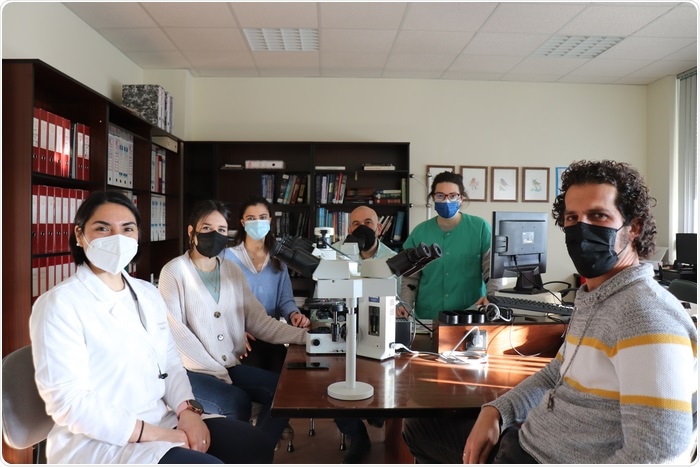Porcine Reproductive and Respiratory Syndrome Virus (PRRSV) is one of the most deadly diseases in the swine industry. It is typically accompanied by numerous secondary diseases, which is why it has become the health concern that causes the most economic losses in the swine business worldwide. It affects the reproductive function in breeding sows and the respiratory passages of small animals.

Image of the University of Córdoba team that carried out the research. Image Credit: University of Córdoba
According to a new study led by Librado Carrasco of the University of Cordoba’s Animal Pathology group, the involvement of three main molecules in the immune defense against such pathogen has been identified in three target organs of the pig: the lung, the thymus, and the tracheobronchial lymph node, which are essential to the triggering of the immune response and where the virus reproduces the most once it interacts with the organism.
Due to this particular aim, the researchers examined the organs of 70 pigs in three groups: one that was not infected by the pathogen and served as a control group, and two others that were infected with two virus strains of differing severity. The research concentrated on what are known as Viral Transcription Factors, which are chemicals that regulate the development of immune system cells.
As one of the study’s key authors, Inés Ruedas-Torres, points out, the findings show that three of these molecules (T-BET, FOXP3, and EOMES) are generated more powerfully and early in the most virulent strain studied.
The immune response: a balance between several factors
Another researcher who took part in the study, Irene Rodrguez-Gómez, emphasizes, “Immune defense is not based on a single response, but rather on the sum of several elements.”
In this manner, as the study demonstrates, each of the three proteins discovered to be critical to the immune response performs a unique role in the body’s defense. While the first of the three molecules studied (T-BET) is involved in the activation of macrophages that phagocytize the virus, the second (FOXP3) regulates the infected organism’s inflammatory response, among other things.
The third molecule (EOMES) is responsible for activating lymphocytes, which then cause virus-infected cells to die.
Apart from the fact that this study analyzes a series of aspects related to basic science. These results allow us to identify factors key to the immunopathology of this disease in order to continue studying them in more detail, and to develop certain strategies in the future.”
Jaime Gómez-Laguna, University of Córdoba
There are now numerous commercial PRRSV vaccinations available, but none of them, according to the study, protects secondary infections or provides total protection due to the virus’s fast mutation rate. As a result, the long-term focus is to create new vaccine candidates that provide comprehensive immunity against the pathogen’s various strains.
Source:
Journal reference:
Ruedas-Torres, I., et al. (2021) Activation of T-bet, FOXP3, and EOMES in Target Organs From Piglets Infected With the Virulent PRRSV-1 Lena Strain. Frontiers in Immunology. doi.org/10.3389/fimmu.2021.773146.